UW-Madison
-
UW–Madison researchers find hidden genetic clues upping cardiovascular disease risk
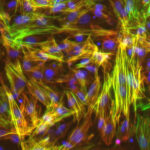
June 20, 2025
Researchers at the University of Wisconsin–Madison have uncovered new evidence in a decades-old genetic mystery, discovering how a group of genetic variations in a long-mysterious region of the human genome can put people at higher risk of cardiovascular disease. Thanks to past studies of the whole human genome that drew associations between particular variations and […]
-
The growth of esports at UW–Madison

June 9, 2025
While esports isn’t usually the first thing that comes to mind when you think of athletics, there are a lot of skills that you need to be a good esports athlete. “There is a big mental aspect of esports, but part of it is just mechanical skills, like how well you aim and stuff,” says […]
-
App under development at UW-Madison could make it easier, more affordable to ‘age in place’
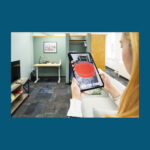
May 13, 2025
University of Wisconsin–Madison researchers are using augmented reality to make the homes of older adults safer. Their innovation will not only streamline a sometimes clunky process but also support a more affordable and community-based approach that can reach more people. It’s an urgent issue: Older adults in Wisconsin have the greatest chance of death after a fall. […]
-
UW-Madison startup Ubicept secures $1 million investment in TitletownTech Startup Draft

April 28, 2025
Madison, WI – Ubicept, a company with its foundational technology developed at University of Wisconsin-Madison and the Massachusetts Institute of Technology, has been selected as one of two winners in the inaugural TitletownTech Startup Draft, securing a $1 million investment from the Green Bay–based venture capital firm. According to TitletownTech, “the TitletownTech Startup Draft, launched […]
-
Bucky’s Tuition Promise makes college dreams come true for Wisconsin families

April 23, 2025
As students arrive for the school day in Mackenzie Straub’s third-grade classroom in Fish Creek, Wisconsin, they check in on a large, interactive screen that includes a photo of their teacher and another notable: Bucky Badger. It’s a nod to Straub’s fond feelings toward her alma mater, the University of Wisconsin–Madison. Straub earned a bachelor’s […]
-
For the Love of a Pet
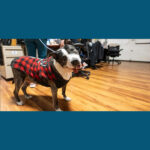
April 8, 2025
A UW veterinary clinic provides affordable care for owners experiencing hardship One thing you notice about WisCARES is the kindness. It’s a place where happiness abounds, even among some of life’s most unhappy circumstances. In a sparkling-clean silver cage, a black kitty rears up like a tiny lion, front paws in the air, jostling a shiny pink ball […]
-
Why do birds make so many different sounds? A new UW–Madison study gets at the underlying factors

March 27, 2025
Birds make sounds to communicate, whether to find a potential mate, ward off predators, or just sing for pleasure. But the conditions that contribute to the immense diversity of the sounds they make are not well understood. Researchers at the University of Wisconsin–Madison have conducted the first-ever global study of the factors that influence bird […]
-
A novel approach to PFAS removal and awareness efforts
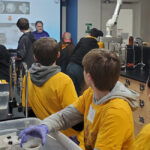
March 12, 2025
When it comes to PFAS research and education, Seyed Javad Amirfakhri is professionally and personally invested. Amirfakhri is an Assistant Professor of Paper science and Chemical Engineering at UW-Stevens Point who is conducting innovative PFAS removal research. He also has five children and wants to make sure drinking water is safe for them and others. […]
-
Research collaboration tackles phosphorus pollution and educates youth
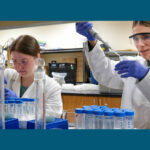
March 4, 2025
If you’ve seen blue-green algae on local lakes and rivers, you’ve seen the effects of agricultural runoff — particularly phosphorus pollution. This nutrient contaminates Wisconsin’s freshwater lakes and negatively impacts water quality and safety for human consumption and aquatic life. A Freshwater Collaborative–funded project led by researchers at UW-Green Bay and UW-Madison is tackling phosphorus […]
-
UW–Madison researchers and Wisconsin farmers work together to produce healthy potato harvests
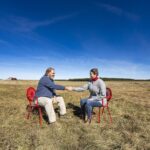
February 25, 2025
Andy Diercks, a fourth-generation potato farmer from the small village of Coloma in central Wisconsin, is blunt about the difficult realities facing family-owned farms today. “There are days when the choices aren’t always good, and you’re making the least bad choice,” he says. “But we’ve survived well. I’m proud of what we do here.” The […]
